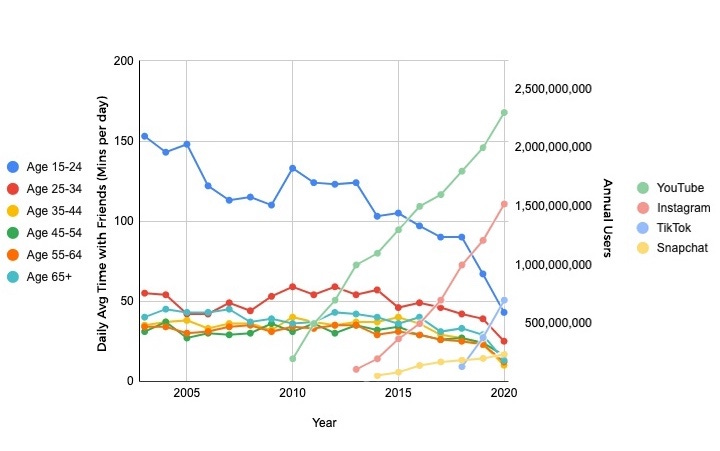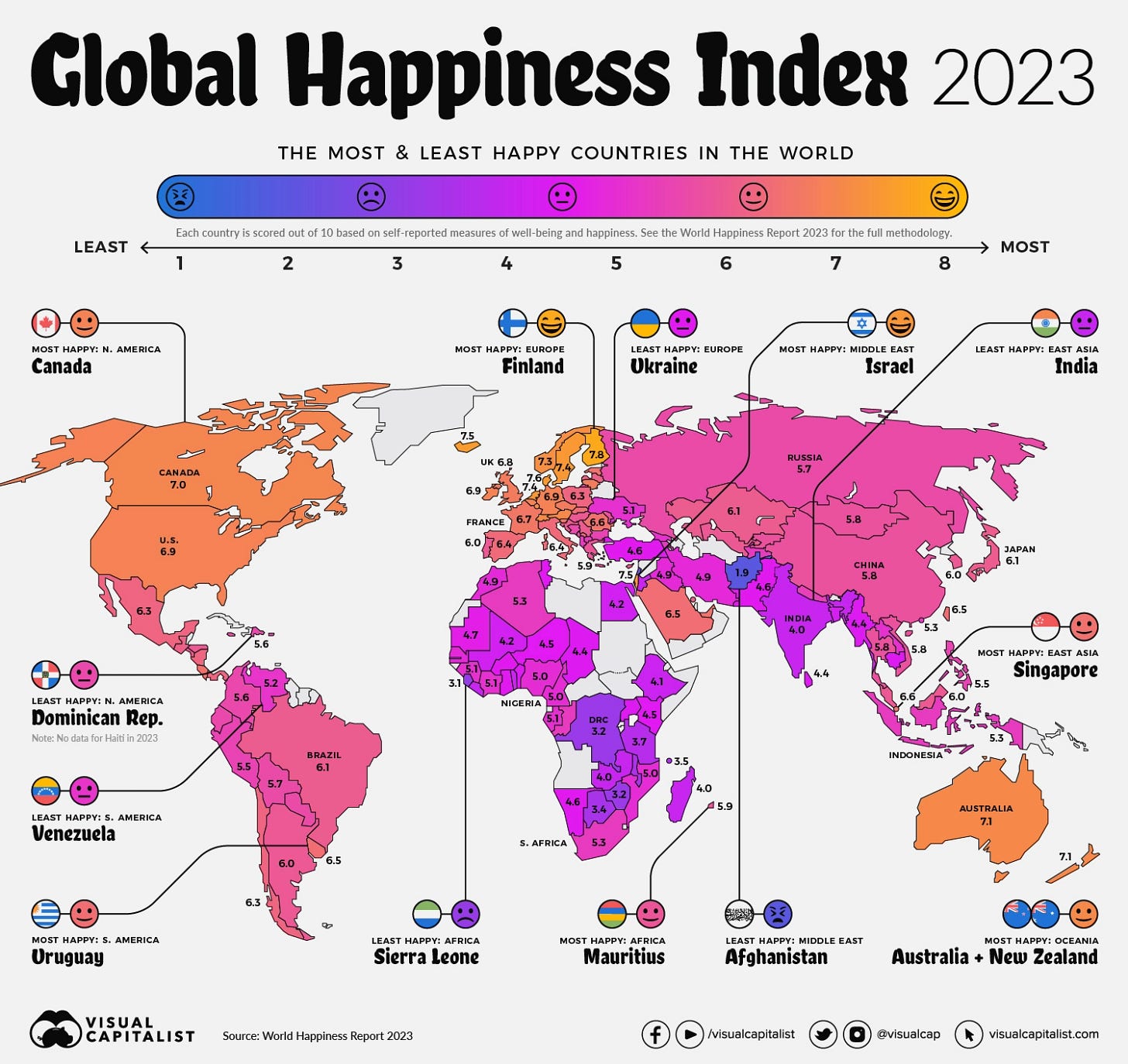Weekly High Five #11
The top 5 behavioral science, health, and wellness stuff I came across this week that's worth sharing.
Welcome to this week’s edition of High Five where we dig deeper into the CDC Youth Risk Survey and the alarming rates of depression among female teens, get some good news about peanuts, and find out where we should be laying down our roots if we want to be happy. Let’s get to it.
Here are the things I came across this week that made me go 😲 , 🤨 , 🤯, or💡!
📰 3 Eyebrow-Raising News and Research Articles
Last week I shared how the CDC Youth Risk Behavior Survey showed that US Teen Girls are experiencing increased sadness and violence. The report didn’t examine the possible causes of these increases, but there were those who attributed it to either COVID or an increase in academic pressure on students. Social psychologist and Professor of Ethical Leadership at New York University, Jonathan Haidt believes social media is at the root of this issue and he provides plenty of supporting evidence within two of his most recent articles: Academic Pressure Cannot Explain the Mental Illness Epidemic and The New CDC Report Shows That COVID Added Little to Teen Mental Health Trends.
One table, in particular, stood out to me in his COVID-related article. It showed how daily average time with friends has been drastically decreasing since around 2012 for Gen Z.
Haidt gives his take on the decrease saying, “Gen Z’s in-person social lives were decimated by technology in the 2010s. They were already socially distanced when Covid arrived.”
So I took that table and overlayed the number of social media users across all age groups for the four most popular platforms among Gen Z. Although it doesn’t show the number of users for Gen Z exclusively (I couldn’t track down Gen Z-specific data across every year), Gen Z does use each of these platforms more than any other group — often significantly. My version of the table provides a visual contrast between the meteoric rise in these social media platforms and the drastic drop in time spent with friends (which also coincided with an increase in loneliness and depression).
Daily average time spent with friends. Original graph by Zach Rausch from data in Kannan & Veazie (2023), analyzing the American Time Use Study. Adapted by J. Rivas It’s becoming increasingly difficult to ignore the real possibility that social media is negatively influencing the mental health of teens and young adults and I’m genuinely curious to see if there is any lasting effect as Gen Z begins to live on their own and enter the workforce as adults. I’ll be closely observing my own kids to see how this situation plays out.
On a lighter note, there is good news for peanut lovers! A new study shows that introducing peanut products to babies between four to six months of age can reduce peanut allergies by 77%. Does this mean airplanes will ever be peanut-friendly again? Probably not but at least we can say we’re one step closer to a world where peanuts can fly high without fear of causing a nutty situation. 😉
In 2013, the United Nations proclaimed March 20th to be the International Day of Happiness. Ten years later, the 2nd World Happiness Report report was published. The beastly 166-page report covers topics like how best to measure happiness, whether social media data can show us levels of happiness and distress, how altruistic behavior affects individual and societal happiness, and how trust and benevolence saved lives over the past three COVID years.
To measure and rank happiness levels across the globe, respondents were asked “to evaluate their current life as a whole using the image of a ladder, with the best possible life for them as a 10 and worst possible as a 0. Around 1,000 responses are gathered annually for each country.” Rankings were based on a three-year average. Finland, Denmark, and Iceland round out the top three, while the United States landed at the 15th spot.
Image Credit: Virtual Capitalist
📺 2 Fascinating Videos
This video about the high costs of American health care came out in 2015, but unsurprisingly, it’s still just as relevant eight years later.
“The irony of American health care is that it’s so expensive that it’s hard to make it cheaper.” Real talk.I can’t say I’m a fan of Tucker Carlson or even his interview with Dr. Mark Hyman, director of the Cleveland Clinic Center for Functional Medicine and author of numerous books on diet and food. His questions literally sounded like they were coming from a fourth-grader. Fortunately, Dr. Hyman did most of the talking, and although his message is basically the same one he’s been preaching for years, which is that the consumption of sugar and ultra-processed foods is responsible for various health issues, including cancer, heart disease, diabetes, dementia, depression, infertility, and even acne, I still feel like it’s a message that needs to be heard, again, and again.
Earlier this week I talked about how individualism impacts the field of health and wellness — making it easy to shame and blame people for their health outcomes. Dr. Hyman touches on this saying, “People need to understand they have a problem that’s not their fault. A lot of the narrative out there from the food industry, the government, professional associations, Academy of nutrition dietetics, American Heart Association, Diabetes Association, is that, basically, all you have to do to lose weight is eat less and exercise more. And the implicit message in that is that it's your fault that you're fat. If you don't eat less and exercise more, it means you're a lazy glutton. And the science just does not support that fact.”
That’s all for this week. Enjoy your weekend and we’ll see you in seven days!




